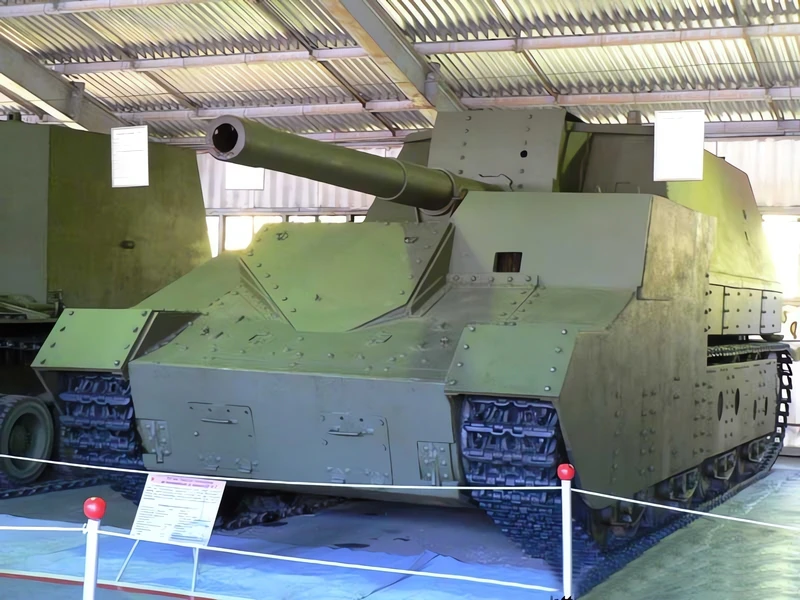
SU-14 | |
|---|---|
| Maa | Neuvostoliiton |
| Rooli | Itseliikkuva ase |
| Rakennettu | 2 prototyyppiä |
Nniiden SU-14 oli Neuvostoliiton raskaan itseliikkuvan tykin prototyyppi, joka rakennettiin T-35-alustalle. Alkuperäiseen prototyyppiin asennettiin 152 mm:n tykki M1935 (Br-2); vuoden 1936 SU-14-1-versiossa oli 203 mm:n B-4-tykki, joka pystyi ampumaan 48,9 kilon ammuksia jopa 25 km:n etäisyydeltä. Sen panssari oli 20-50 mm paksu. Se ei koskaan päässyt sarjatuotantoon.
Lähde: SU-14 Wikipediassa
| SU-14-2 Walk Around | |
|---|---|
| Valokuvaajat | Ei tietää |
| Lokalisointi | Ei tietää |
| Valokuvat | 12 |
Katso myös:
Nniiden SU-14 was a Soviet prototype self-propelled gun developed in the late 1930s. It was based on the T-35 heavy tank chassis and armed with a 203 mm howitzer. The SU-14 was intended to provide heavy artillery support for the Red Army, especially in breaking through enemy fortifications. However, only two prototypes were built before the outbreak of World War II, and they never saw combat.
The SU-14 project began in 1936 as an attempt to create a mobile artillery platform that could fire shells with a high explosive mass and a long range. The design team chose the T-35 chassis as the basis for the vehicle, as it had enough space and weight capacity to mount a large gun and its ammunition. The gun selected was the B-4 203 mm howitzer, which had a maximum range of 18 km and could fire shells weighing up to 100 kg. The gun was mounted in a fixed casemate at the rear of the hull, with a limited traverse of 8 degrees left and right. The crew consisted of seven men: the driver, the commander, the gunner, and four loaders.
SU-14: n ensimmäinen prototyyppi valmistui vuonna 1937 ja sitä testattiin Kubinkan testialueella. Sillä osoittautui olevan hyvä liikkuvuus ja maastohiihtosuorituskyky kokoonsa ja painoonsa nähden, mutta se kärsi myös mekaanisista ongelmista ja heikosta luotettavuudesta. Toinen prototyyppi rakennettiin vuonna 1938 joillakin parannuksilla, kuten uudella moottorilla ja voimansiirrolla, parannetulla panssarisuojauksella ja apukonekiväärillä jalkaväkeä vastaan. Molemmat prototyypit osallistuivat Neuvostoliiton ja Suomen sotaan 1939-1940 osana kokeellista tykistöyksikköä, mutta he eivät harjoittaneet mitään taistelutoimia.
The SU-14 project was canceled in 1941 due to the German invasion of the Soviet Union and the urgent need for more conventional tanks and guns. The two prototypes were abandoned at Kubinka after being damaged by German air raids. They were later scrapped after the war.
Views : 215






